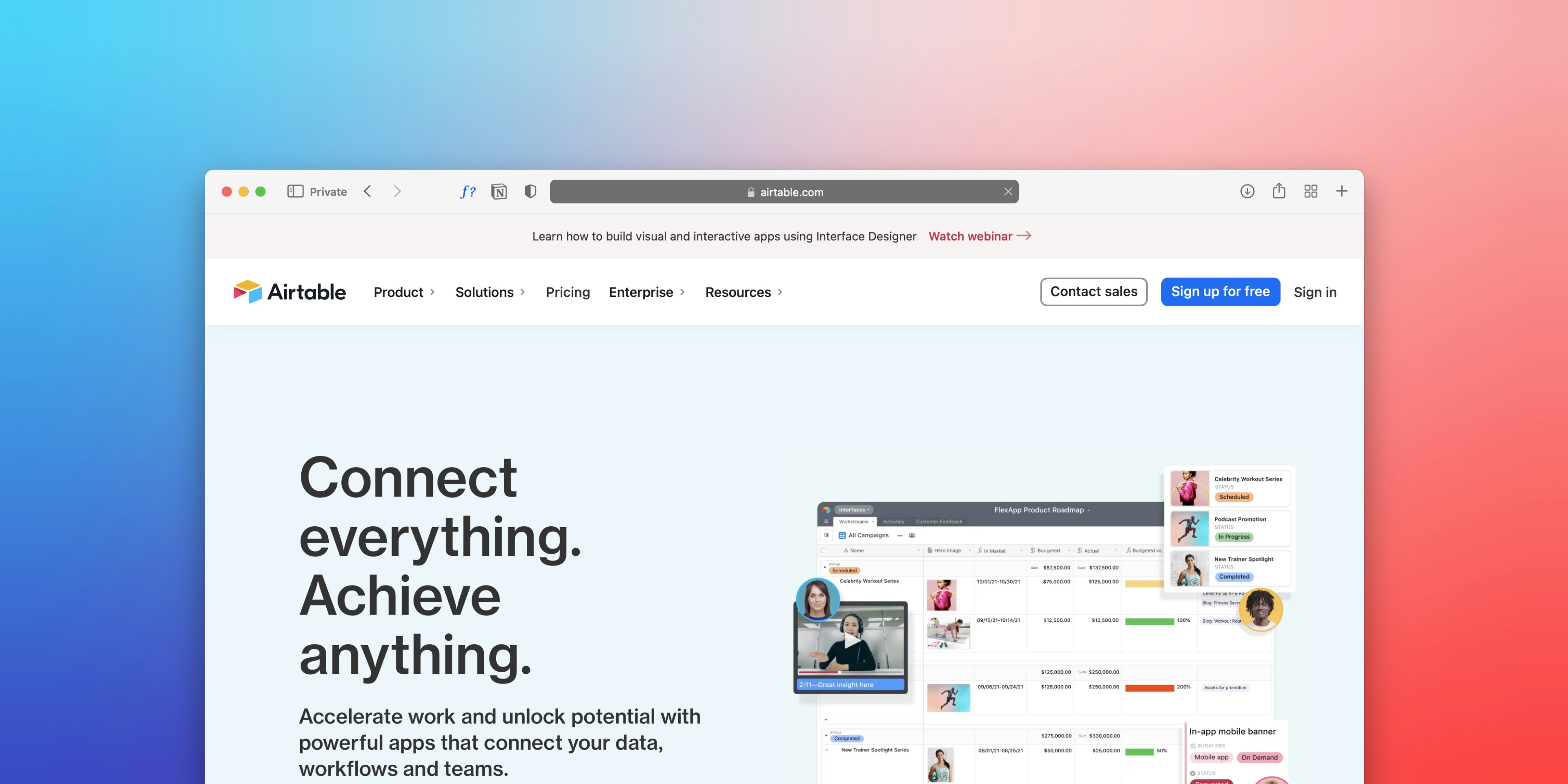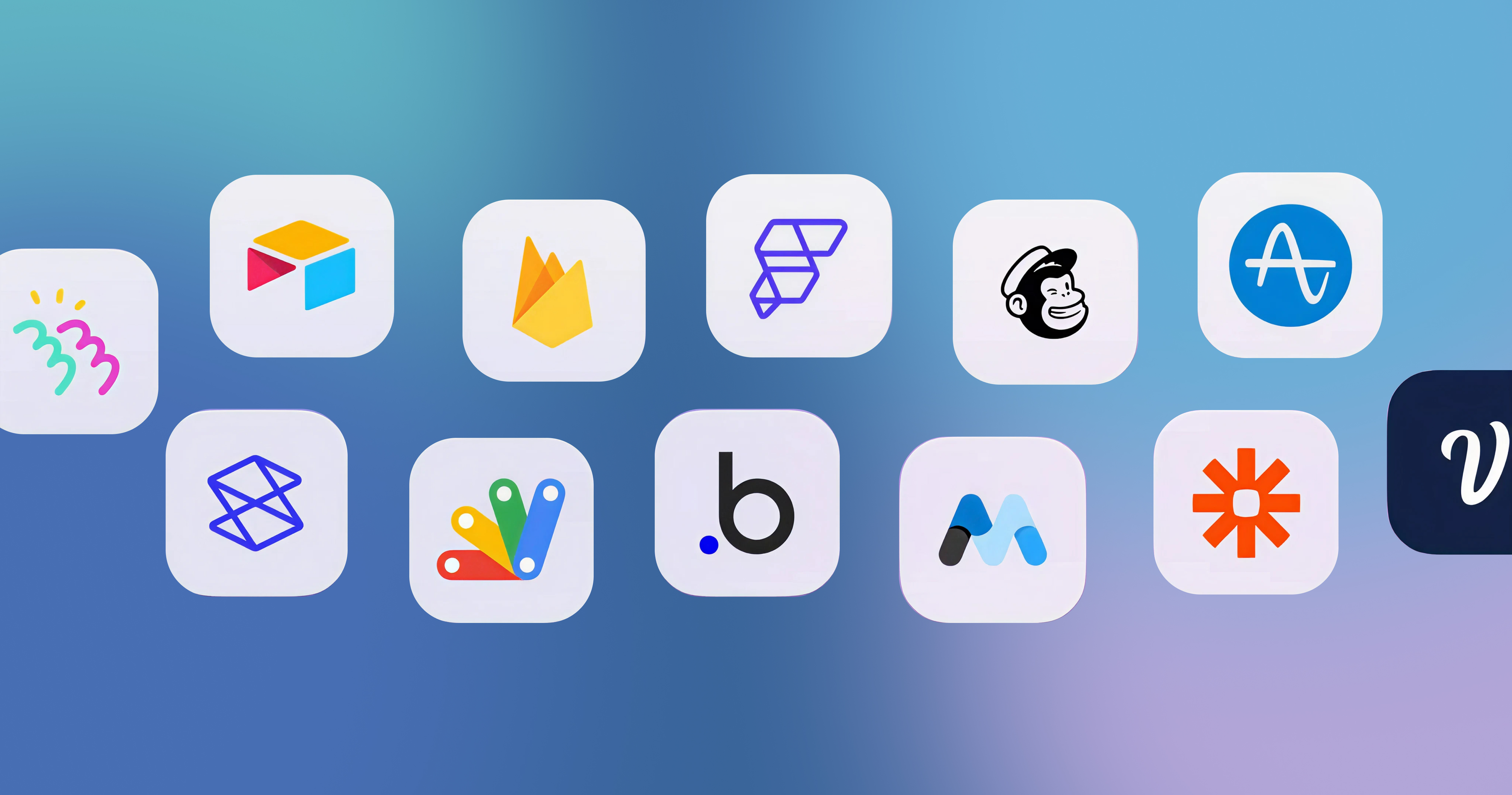-p-2000.png)


Pros and Cons of Using Webflow: Everything You Need to Know

There are many content management systems (CMS) available in the market, including Webflow. But before you invest your time and money in any tool, it is vital to understand if it meets your requirements.
In this article, we discuss the pros and cons of using Webflow and understand if it suits you.
What is Webflow and what are the benefits of using it?
Webflow is a cloud-based SaaS design tool and content management system (CMS) that allows you to create websites without coding.
Webflow is ideal for creating blogs, eCommerce stores, microsites, portfolios, event sites, landing pages, and corporate websites. The platform offers a great degree of customization options, making it a popular choice among web designers.
Some of the features unique to Webflow include:
- A real-time visual builder
- Access to multiple themes when developing a website
- No need for extra plugins
- Cuts down development time
- Cost-effective
Who is Webflow aimed at?
According to builtwith.com, there are currently over 368,000 websites built on Webflow, with nearly 185,224 in the United States.
Webflow is primarily aimed at business owners, web development agencies, freelance web designers, and content creators. The range of customizations offered by the Webflow makes it suitable for almost anyone looking to create a website.
Advantages and disadvantages of Webflow
Webflow is one of the many website builders in the market. There are several factors to consider before choosing a website builder for your business. Here are some of the pros and cons of choosing Webflow listed by one of the most popular web design and development agency
Pros of Webflow
1. Live prototyping

Websites have several interactive elements that enhance user experience, and it can be difficult to visualize it all when creating a mockup. With Webflow, you can close the gap between visual design mocks and the final website as it offers live prototyping that sets concrete expectations for the final design.
2. No plugins
Webflow does not require plugins to make a functional website. The lack of it helps create a more stable website, as plugins require constant updates and micromanagement to stay updated with the changing web trends. Also, plugins also make the site slow and may even break it.
3. Greater collaborations
Webflow allows teams to collaborate and develop the website quickly. It will enable teammates to edit content while another designer builds the site. It helps keep the design process fluid while allowing project managers to oversee projects easily.
4. Short development time
With opportunities to collaborate, the development time using Webflow drastically reduces. The designs are responsive by nature, which means that anything created for the desktop cascades for tablets and mobiles. You may adjust the elements to ensure it matches your design sensibility and is precise.
Also read: 7 Reasons Why Webflow Is Good For Web Developers
5. Secured hosting platform
Webflow offers a high-level of security with its free SSL certificate. The platform complies with security standards and allows you to restrict access to the backend.

Moreover, their globally-distributed AWS powered hosting stack ensures your site runs smoothly at all times.
6. User-friendly
Webflow offers a visual builder that allows you to drag-and-drop elements, making it easy to build complex designs. It will enable you to completely customize your website, unlike any other CMS.
Since Webflow is a no-code platform, it changes the way you develop a website and makes the process hassle-free.
Let's talk.
Get in touch7. Immersive interactions
Webflow provides designers with options to create unique interactions that enhance user experience.
You can use tools to animate and create hover states, parallax, precise reveal animations, progress bars, and auto-load elements. You can customize the control triggers and effects to create a unique experience for your website.
8. Pricing flexibility
Webflow is created for everyone, and one significant advantage of using it is the flexibility in their plans. They provide multiple options ranging from free plans for someone learning Webflow to paid plans for startups, enterprises, agencies, and freelancers.
There are two types of Webflow paid plans:
1. Site Plan - This plan is geared towards people who want to try and build websites themselves. Perfect for those who want to create a blog, business website or online store.
2. Workspace Plans – This plan is best suited for freelancers, and professional web design agencies who need to manage multiple projects.
The Site plan is further divided into 2 plans - General and Ecommerce.
The General plan has a free plan along with four paid plans starting at $14/month.

The ecommerce plan has three different plans starting at $29/month.

Then there is Workspace Plans which is divided into 2 plans - In house teams, Freelancers & agencies.
The in house teams plan has one free plan along with 3 other paid plans starting at $19/month.

The freelancers & agencies plan has one free plan along with 2 other paid plans starting at $16/month.

All plans offer access to various Webflow features, including responsive designs, interactions and animations, global swatches, backups, reusable symbols, and more.
9. Templates
Webflow provides over 1000 templates , which can be customized using Webflow’s inbuilt code free design tools.

The templates are categorized by industry, so it is easy to find a template that suits your needs. The templates are also responsive, so they will look good on all devices. Webflow also has a great selection of free templates for e-commerce, blog, business and more.
10. SEO controls
Webflow helps you optimize your SEO efforts with its flexible content management tools. It provides control over SEO meta tags, markup, indexing rules, 301 redirects, and more.

You can automatically define meta titles and descriptions using fields in the CMS collections. Additionally, it simplified adding image metadata (alt text) to ensure images are screen reader accessible.
It also has built-in audit tool that provides SEO recommendations like missing alt text for images, poor heading structure etc.
Recommended Reading: Is Webflow Good for SEO?
11. Logic-based workflows
Logic is a new way to automate a website natively. Actions like routing sales leads, updating user-generated content, connecting with customers, and more can be built directly into the site.
The flow editor helps set triggers, conditions, and actions to automate anything from email collections to more complex marketing assets using the drag-and-drop editor.
Cons of Webflow
1. Lack of code customizations
If you want to customize websites at the code level, it is not possible with Webflow. Its powerful customization options allow you to alter basic code customizations, but you cannot change the functionality of any code.
2. Desktop edits
Unlike other CMS, Webflow does not offer a mobile app to make edits to the content and design. Anything that you wish to change on your site must be done through a desktop or laptop.
3. Extensive pricing plans
The extensive pricing plans that come with Webflow may seem confusing. You may find it challenging to choose a plan that suits your business.
4. Restriction on eCommerce
If you want to create an eCommerce store using Webflow, then you may face roadblocks as their eCommerce system is still in beta.
Additionally, their payment gateway is supported through Stripe, which is currently available only in 26 countries. If Stripe is not live in your country, then using Webflow for eCommerce may not benefit your business.
Is Webflow worth it?
The robust features offered by Webflow make it a great go-to option for building a quick, responsive, and user-friendly website. It provides you with immense flexibility and collaboration options that make it easy to develop a website within a short turnaround.
Moreover, the platform empowers everyone from freelancers and small businesses to large enterprises, helping them to create scalable websites.
Its range of responsive designs and no-code drag-and-drop customizations helps you create your dream website quickly.
If you would like to know more about Webflow or need expert assistance in building, customizing, or optimizing your website, do not hesitate to get in touch with Seattle New Media, a full service Webflow agency focusing on web design and development. Our team can guide you through every step of the process, ensuring a seamless, high-performing, and visually stunning Webflow website tailored to your business needs.

Let's talk.
Get in touchFAQ
Editorial Team
Publisher
There are many content management systems (CMS) available in the market, including Webflow. But before you invest your time and money in any tool, it is vital to understand if it meets your requirements.
In this article, we discuss the pros and cons of using Webflow and understand if it suits you.
What is Webflow and what are the benefits of using it?
Webflow is a cloud-based SaaS design tool and content management system (CMS) that allows you to create websites without coding.
Webflow is ideal for creating blogs, eCommerce stores, microsites, portfolios, event sites, landing pages, and corporate websites. The platform offers a great degree of customization options, making it a popular choice among web designers.
Some of the features unique to Webflow include:
- A real-time visual builder
- Access to multiple themes when developing a website
- No need for extra plugins
- Cuts down development time
- Cost-effective
Who is Webflow aimed at?
According to builtwith.com, there are currently over 368,000 websites built on Webflow, with nearly 185,224 in the United States.
Webflow is primarily aimed at business owners, web development agencies, freelance web designers, and content creators. The range of customizations offered by the Webflow makes it suitable for almost anyone looking to create a website.
Advantages and disadvantages of Webflow
Webflow is one of the many website builders in the market. There are several factors to consider before choosing a website builder for your business. Here are some of the pros and cons of choosing Webflow listed by one of the most popular web design and development agency
Pros of Webflow
1. Live prototyping

Websites have several interactive elements that enhance user experience, and it can be difficult to visualize it all when creating a mockup. With Webflow, you can close the gap between visual design mocks and the final website as it offers live prototyping that sets concrete expectations for the final design.
2. No plugins
Webflow does not require plugins to make a functional website. The lack of it helps create a more stable website, as plugins require constant updates and micromanagement to stay updated with the changing web trends. Also, plugins also make the site slow and may even break it.
3. Greater collaborations
Webflow allows teams to collaborate and develop the website quickly. It will enable teammates to edit content while another designer builds the site. It helps keep the design process fluid while allowing project managers to oversee projects easily.
4. Short development time
With opportunities to collaborate, the development time using Webflow drastically reduces. The designs are responsive by nature, which means that anything created for the desktop cascades for tablets and mobiles. You may adjust the elements to ensure it matches your design sensibility and is precise.
Also read: 7 Reasons Why Webflow Is Good For Web Developers
5. Secured hosting platform
Webflow offers a high-level of security with its free SSL certificate. The platform complies with security standards and allows you to restrict access to the backend.

Moreover, their globally-distributed AWS powered hosting stack ensures your site runs smoothly at all times.
6. User-friendly
Webflow offers a visual builder that allows you to drag-and-drop elements, making it easy to build complex designs. It will enable you to completely customize your website, unlike any other CMS.
Since Webflow is a no-code platform, it changes the way you develop a website and makes the process hassle-free.
Let's talk.
Get in touch7. Immersive interactions
Webflow provides designers with options to create unique interactions that enhance user experience.
You can use tools to animate and create hover states, parallax, precise reveal animations, progress bars, and auto-load elements. You can customize the control triggers and effects to create a unique experience for your website.
8. Pricing flexibility
Webflow is created for everyone, and one significant advantage of using it is the flexibility in their plans. They provide multiple options ranging from free plans for someone learning Webflow to paid plans for startups, enterprises, agencies, and freelancers.
There are two types of Webflow paid plans:
1. Site Plan - This plan is geared towards people who want to try and build websites themselves. Perfect for those who want to create a blog, business website or online store.
2. Workspace Plans – This plan is best suited for freelancers, and professional web design agencies who need to manage multiple projects.
The Site plan is further divided into 2 plans - General and Ecommerce.
The General plan has a free plan along with four paid plans starting at $14/month.

The ecommerce plan has three different plans starting at $29/month.

Then there is Workspace Plans which is divided into 2 plans - In house teams, Freelancers & agencies.
The in house teams plan has one free plan along with 3 other paid plans starting at $19/month.

The freelancers & agencies plan has one free plan along with 2 other paid plans starting at $16/month.

All plans offer access to various Webflow features, including responsive designs, interactions and animations, global swatches, backups, reusable symbols, and more.
9. Templates
Webflow provides over 1000 templates , which can be customized using Webflow’s inbuilt code free design tools.

The templates are categorized by industry, so it is easy to find a template that suits your needs. The templates are also responsive, so they will look good on all devices. Webflow also has a great selection of free templates for e-commerce, blog, business and more.
10. SEO controls
Webflow helps you optimize your SEO efforts with its flexible content management tools. It provides control over SEO meta tags, markup, indexing rules, 301 redirects, and more.

You can automatically define meta titles and descriptions using fields in the CMS collections. Additionally, it simplified adding image metadata (alt text) to ensure images are screen reader accessible.
It also has built-in audit tool that provides SEO recommendations like missing alt text for images, poor heading structure etc.
Recommended Reading: Is Webflow Good for SEO?
11. Logic-based workflows
Logic is a new way to automate a website natively. Actions like routing sales leads, updating user-generated content, connecting with customers, and more can be built directly into the site.
The flow editor helps set triggers, conditions, and actions to automate anything from email collections to more complex marketing assets using the drag-and-drop editor.
Cons of Webflow
1. Lack of code customizations
If you want to customize websites at the code level, it is not possible with Webflow. Its powerful customization options allow you to alter basic code customizations, but you cannot change the functionality of any code.
2. Desktop edits
Unlike other CMS, Webflow does not offer a mobile app to make edits to the content and design. Anything that you wish to change on your site must be done through a desktop or laptop.
3. Extensive pricing plans
The extensive pricing plans that come with Webflow may seem confusing. You may find it challenging to choose a plan that suits your business.
4. Restriction on eCommerce
If you want to create an eCommerce store using Webflow, then you may face roadblocks as their eCommerce system is still in beta.
Additionally, their payment gateway is supported through Stripe, which is currently available only in 26 countries. If Stripe is not live in your country, then using Webflow for eCommerce may not benefit your business.
Is Webflow worth it?
The robust features offered by Webflow make it a great go-to option for building a quick, responsive, and user-friendly website. It provides you with immense flexibility and collaboration options that make it easy to develop a website within a short turnaround.
Moreover, the platform empowers everyone from freelancers and small businesses to large enterprises, helping them to create scalable websites.
Its range of responsive designs and no-code drag-and-drop customizations helps you create your dream website quickly.
If you would like to know more about Webflow or need expert assistance in building, customizing, or optimizing your website, do not hesitate to get in touch with Seattle New Media, a full service Webflow agency focusing on web design and development. Our team can guide you through every step of the process, ensuring a seamless, high-performing, and visually stunning Webflow website tailored to your business needs.
FAQ
Editorial Team
Publisher
Webflow FAQs
1. Is Webflow good for beginners?
Yes. Webflow is a great platform for beginners who want to create great looking websites without having to code. The platform is user-friendly and the drag-and-drop interface makes it easy to create responsive websites. There are so many free templates to help you get started.
2. Is Webflow safe and secure?
Webflow offers data encryption that allows your data to be stored and transmitted securely between Webflow's servers and your site. Since there is no coding or plugins involved in Webflow, the risk of hacking is also very low.
3. How good is Webflow's support?
Webflow's email support is great. They are always quick to respond to any questions or concerns you may have. They also have a huge set of resources like Webflow University, Forums, and their Youtube channel in case you get stuck anywhere.
4. What is Webflow not good for?
Webflow is not a good choice for creating eCommerce websites. It’s a bit expensive and also the feature set and payment gateways are limited in Webflow compared to other website builders in the market like Shopify.
5. Do I need coding for Webflow?
No, you don't need coding for Webflow. You can use Webflow's visual editor to design and build your website without writing any code. But it would be a big plus if you have a bit of coding knowledge.
6. How long does it take to make a website in Webflow?
It can take anywhere from 2-4 weeks to build a website in Webflow. Some websites may take longer than others depending on the size and complexity of the project and requirements.




Hi, I'm Mike!
If you are enjoying the article, feel free to subscribe to our monthly newsletter.
If you have any project requirements, please contact us.







.png)









